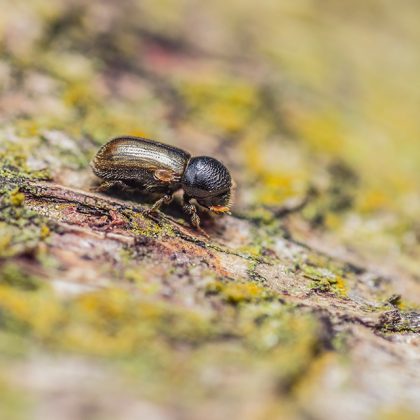Meet the new editor of The Canadian Entomologist
 My name is Dezene Huber, and I’m a professor in the Ecosystem Science and Management Program at the University of Northern British Columbia in Prince George (Canada). Much of the research in my lab over the years has been on forest insects – particularly bark beetles. Lately I’ve been shifting some of my focus toward regional insect – especially aquatic insect – biodiversity. I have been enjoying that new research journey.
My name is Dezene Huber, and I’m a professor in the Ecosystem Science and Management Program at the University of Northern British Columbia in Prince George (Canada). Much of the research in my lab over the years has been on forest insects – particularly bark beetles. Lately I’ve been shifting some of my focus toward regional insect – especially aquatic insect – biodiversity. I have been enjoying that new research journey.
I have been very involved with the Entomological Society of Canada (ESC) for close to a decade now – and recently have volunteered with the Society as the Chair of the ESC Science Policy Committee. Prior to that I was a member of the Science Education and Policy Committee. I have also attended many annual JAMs over the years, by my recollection only missing our recent meeting in Florida since the meeting in Winnipeg in 2009.
I have also been involved with my own regional Society, the Entomological Society of British Columbia (ESBC), since around 2005 when I returned to Canada from postdoctoral work in California. In specific relation to The Canadian Entomologist (TCE) Editor-in-Chief position, I have been the Editor-in-Chief of the Journal of the Entomological Society of British Columbia (JESBC) since 2011.
I believe that well-run regional journals add a great deal to the larger scientific conversation – particularly by recording substantial and important aspects of natural history that might otherwise be lost in notebooks and sent to recycling bins upon retirement of the observers. I’m proud of the work that our team was able to accomplish at JESBC during my time there and I look forward to seeing that journal move forward under Dr. Katherine Bleiker’s leadership as their new Editor-in-Chief.
This brings me to my vision for The Canadian Entomologist. TCE has definitely seen an increase in prominence over the past few years due to the efforts of Editor-in-Chief Dr. Kevin Floate and editorial assistant Dr. Andrew Smith; hard work by other previous Editors-in-Chief; the sustained commitment of the excellent editorial board; the direction of the ESC publications committee; the dedication of ESC members; and the professionalism of our publishing partners at Cambridge. It is great to see TCE moving ahead in such a good direction, and my primary goal is to continue that trajectory of excellence.
I also would like to see The Canadian Entomologist cooperating intentionally with the few regional journals left in Canada. I would like to investigate implementing a policy whereby potentially good Canadian science and natural history – as per a pre-review analysis – that may considered too regional for the scope of The Canadian Entomologist would be passed along to an appropriate regional journal for consideration. Our regional Societies are a substantial portion of the foundation of the ESC and working with their journals is one way to support them.
I also intend to increase the size, coverage of areas of expertise, and diversity of the editorial board. An increase in size and expertise will allow for the assessment of a broader scope of entomological topics. It will also reduce the workload for individual subject editors. Improving the diversity of the board will contribute to a broader perspective on incoming articles both by the subject editors themselves and by the more diverse reviewer pool they will tap.
My top priorities during my time at TCE will always be to ensure that we encourage the publication of robust scientific and natural historical data; that the journal is running smoothly; that there is diverse representation on the editorial board; and that we retain and expand our excellent reputation in the entomological and larger scientific community. I also intend to continue the tradition of responsive Editors-in-Chief at TCE, so if you have any thoughts or ideas that you’d like to share, please write to me at huber@unbc.ca.
The Canadian Entomologist, in its various iterations, is almost as old as our country. I intend to uphold that legacy and work to continue to move us forward in a rapidly changing, but exciting, scientific publishing landscape.







I am trying to track down a biography for Ontario Agricultural College Professor A. W. Baker, an early member of the Canadian/Ontario entomological societies. I would appreciate any help you can provide.